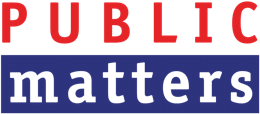The Circular Future of the Netherlands
According to many 2022 was supposed to be the year of the Circular Economy. According to the planning of the Ministry of Infrastructure and Water Management, the National Program on Circular Economy (NPCE) was scheduled to be presented, and the European Commission was supposed to publish their new circular policy in December (revision of the Packaging and Packaging Waste Directive as part of the Circular Economy Package).
Only the European plans came through in 2022, but accompanied by some criticism. For instance, packaging industry interest groups strongly opposed the hard-to-achieve reuse targets, while NGOs accused the Commission of giving in to these demands by toning down its proposal. Although it took some time, The Dutch Program was finally revealed last week. So, will 2023 be the year of the Circular Economy after all?
The NPCE in short
The National Program for the Circular Economy aims to reduce primary use of raw materials by companies and the government with 50% by 2030. An ambitious goal, knowing that the share of circular companies in the Dutch economy is now close to 7%. This includes the well-known bicycle or shoemaker, but also a textile manufacturer that uses recycled textiles. Working towards that 50% means incentivizing a wider range of companies. Hence, the NPCE is laying out several roadmaps for product chains: consumer goods, plastics, construction and manufacturing. Plans for each of these chains were already presented in July 2022; they are now included in the Program.
The weeks leading up to the original release date were messy. In the spring of 2022, the House of Representatives called on the state secretary Heijnen to publish the Program before the Circular Economy Committee debate on November 2, 2022. Until 2 weeks before the debate, it was unclear whether the plan would be presented. Eventually, the publication was postponed, under pressure from interest groups and MPs. In fact, the preparatory sessions of the draft program showed that the plan appeared to be unambitious, lacking concrete goals, lines of action, and responsibilities. So, the Ministry had to return to the drawing board to incorporate the feedback.
Two weeks before publication, the Netherlands Environmental Assessment Agency (PBL) presented their biannual report on the development of a circular economy in the Netherlands, expressing their concerns about the stagnant progress. In addition to the fact that use of most raw materials has not decreased, it also showed an increase in consumption of products, rather than a decrease. PBL is critical on the current government policy and sees a mismatch with the stated goals. As in the previous report, they call for more ‘urge and coercion’. The NPCE includes more prescriptive, normative and incentive measures. However, much of this has yet to be specified.
Two criticisms
Causes that hinder concrete measures are the lack of financial coverage and the plan’s interdepartmental spread. For example, the Budget Memorandum does not include structural funding for circular economy. Also, the program has not been calculated by PBL, which makes the feasibility of the plans uncertain.
As a consequence of the low financial coverage, the NPCE proposes few concrete plans. It talks mostly about ‘exploring’ and additionally about ‘researching’ measures, but there is little mention of ‘implementing’. Exploration and research are relatively safe political words because they have less financial incentives attached to them. The secretary of state gives herself cover by doing so: it names a potential action, without taking responsibility for it.
Furthermore, the piece talks about adding prescriptive, punitive and incentive measures. Whereas the former category requires more financial commitment from the government, the latter category contains it to a lesser extent. It is striking that the secretary of state still opts for primarily stimulating measures, and the normative measures mainly apply to European directives. As a result, the Netherlands to a lesser extent takes the pioneering role it so aspires to.
How to proceed?
The upcoming months will be mainly devoted to giving substance to the action lines. The concretization of the objectives, as well as the addition of more normative and restrictive measures is for now a political matter. By means of motions and commitments, members of Parliament can call on the state secretary to set tougher targets. These months are therefore the perfect opportunity for companies and organizations to have their say as well as sharing experiences about a circular future of the Netherlands.
''This is the perfect opportunity for companies and organizations to have their say about a circular future of the Netherlands.''
Public matters







